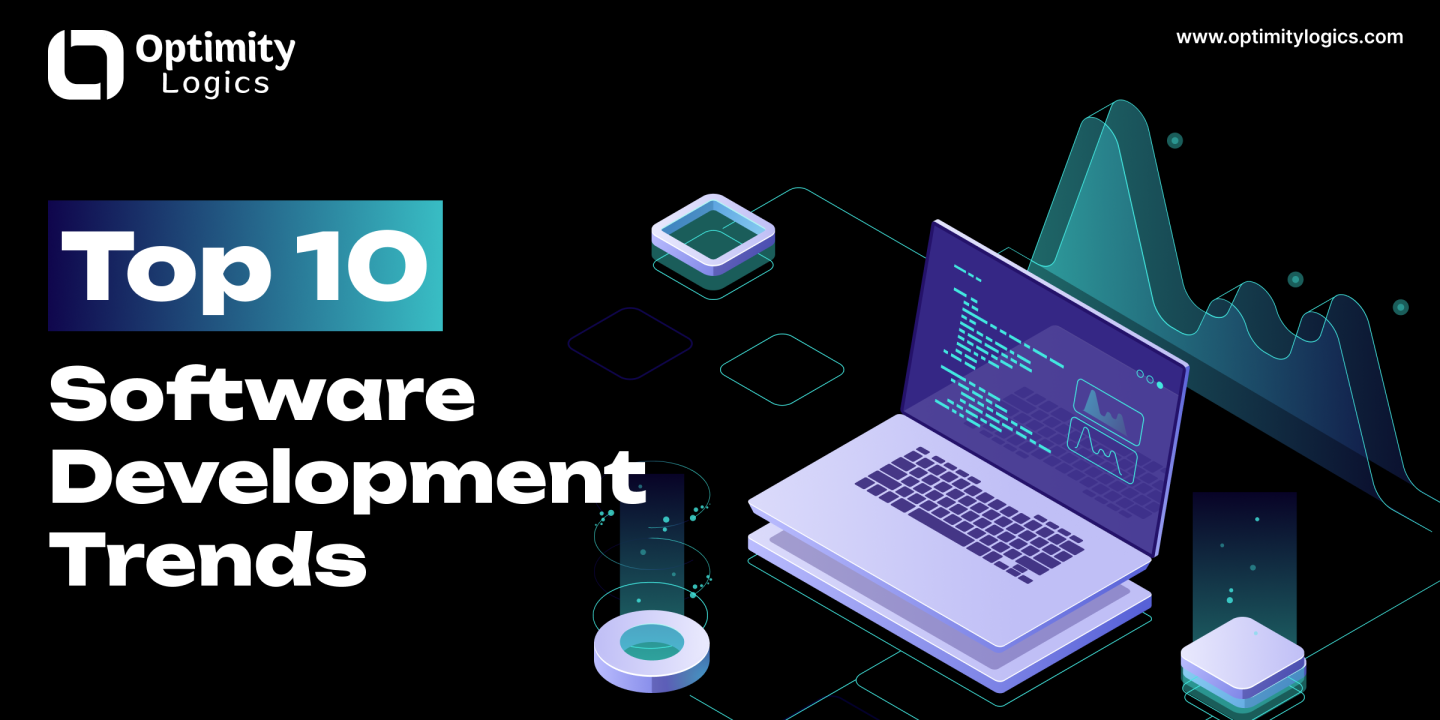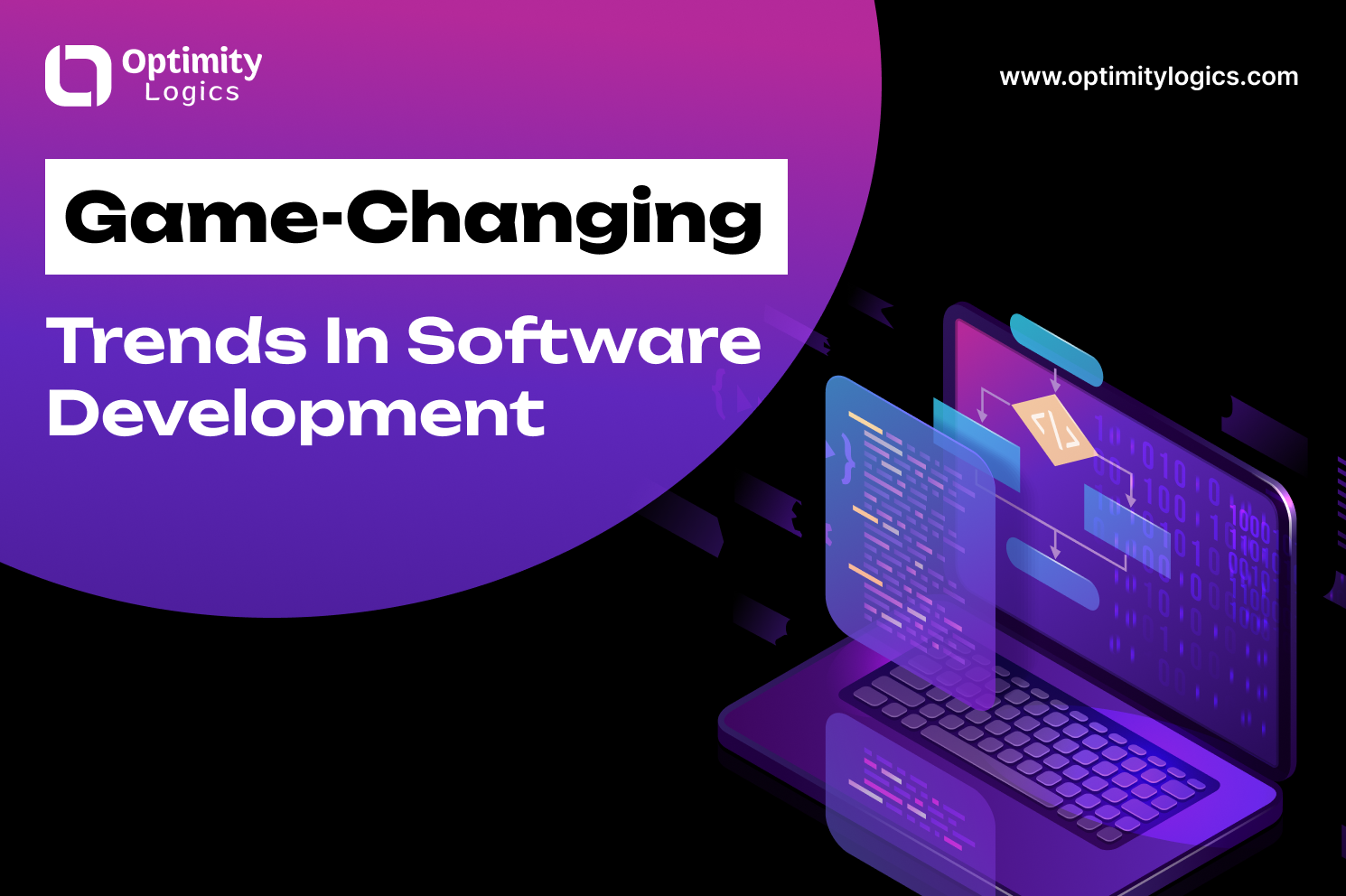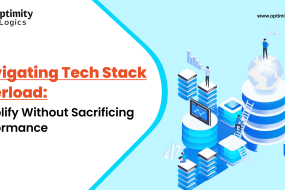
The software development trends is rapidly evolving, driven by technological breakthroughs, shifting user demands, & the need for faster, more efficient solutions. Keeping pace with the latest trends is essential for developers, businesses, & tech professionals to stay ahead in an increasingly competitive digital landscape.
From AI and cloud computing to low-code platforms & enhanced cybersecurity, these trends are revolutionizing the way software is design, developed, & deployed. Also, They not only boost efficiency but also unlock new opportunities across diverse industries.
If you need a custom software solution, hire software developers from a reputable software development company that specializes in building applications tailored to your specific needs. Also, There are many software development companies out there, but finding the right one can be a daunting task. Make sure to do your research and choose a company with a strong track record of delivering high-quality applications.
In this article, Optimity Logics will explore the most impactful software development trends and their transformative influence on the industry.
Game-Changing Trends in Software Development

As technology rapidly advances, software development is experiencing a significant transformation. Cutting-edge trends are redefining how applications are design, deployed, & utilized. These innovations are enhancing efficiency, strengthening security, and elevating user engagement across various industries. Below are some of the most groundbreaking trends shaping the future of software development today.
1) The Rise of Web 3.0
Web 3.0 marks the next evolution of the internet, transforming how we interact with digital content. The growing adoption of Web 3.0 in software development is driven by the increasing demand for secure, decentralized, & privacy-focused online experiences. A key feature of Web 3.0 is the integration of blockchain technology, enabling the creation of decentralized applications (dApps).
This shift redefines how we perceive and engage with the internet, offering a more secure, decentralized, and intelligent web experience. By giving users greater control over their data and privacy, Web 3.0 is poise to shape the future of software development, driving innovation well beyond 2025.
2) Blockchain Technology
Blockchain development is rapidly evolving, extending beyond cryptocurrency to integrate with cutting-edge technologies such as Artificial Intelligence, IoT, & cloud computing. This fusion enables developers to create advanced applications that streamline complex processes and enhance decision-making capabilities.
No longer a niche technology, blockchain is being embraced across various industries, including automotive, agriculture, and logistics. Its decentralized and distributed architecture offers unparalleled security, transparency, and efficiency, making it an increasingly vital tool for businesses. As a result, the number of blockchain-powered applications is expect to grow significantly in 2025 and beyond.
In addition, The days when blockchain was solely associat with cryptocurrency are over. Today, it stands as a transformative force in software development, revolutionizing how industries handle transactions, data security, and operational transparency. Its continued adoption underscores its role as a foundational technology shaping the future of digital innovation.
3) Internet of Things
The Internet of Things (IoT) remains a key driver of software development trends in 2025, continually evolving and unlocking new opportunities for developers and businesses across various industries.
IoT is shaping the development of more intelligent & interconnected applications that harness the vast amounts of data generated by connected devices. Also, These applications provide deeper insights and enhanced value to users. IoT developers must focus on building solutions that seamlessly interact with multiple devices, platforms, and ecosystems. So, This requires expertise in IoT protocols such as MQTT and CoAP, as well as proficiency in programming languages like Python, JavaScript, and C++.
One of the biggest challenges in IoT software development is security. As IoT devices are often vulnerable to cyberattacks & data breaches, developers must prioritize robust security measures to protect sensitive information and ensure the integrity of connected systems.
4) Low-code Development
Low-code development is revolutionizing software creation by enabling developers to build applications using graphical user interfaces and pre-built components instead of coding from scratch. This approach significantly reduces development time and resource requirements while making app creation more accessible to non-technical users.
By leveraging visual interfaces, drag-and-drop tools, and automated workflows, low-code development simplifies the traditionally complex process of software development. Also, Businesses can quickly integrate logic, automate tasks, and deploy applications with minimal coding effort. As a result, the adoption of low-code platforms has surged in recent years, empowering enterprises to accelerate digital transformation and streamline application development.
5) Artificial Intelligence
Artificial intelligence (AI) has become a transformative force in software development, driving innovation across various applications, including chatbots, image and text recognition, machine learning algorithms, and data filtering. Also, Its rapid advancements are reshaping industries & revolutionizing the way software is built and deployed.
AI is expected to see continued growth and innovation in the coming years, particularly with the increasing use of machine learning (ML) algorithms. So, These algorithms enable models to analyze vast datasets, identify patterns, and make data-driven predictions or decisions. Also, AI is already making a significant impact across industries such as healthcare, finance, and transportation, and its influence will only expand as the technology evolves.
As AI continues to advance, new applications and use cases will emerge, solidifying its role as a key driver of progress in software development.
6) Internet of Behavior (IoB)
Personalization is becoming a key focus in emerging software trends, driven by the rise of the Internet of Behavior (IoB). As well as, IoB extends the capabilities of the Internet of Things (IoT) by not only collecting data from connected devices but also tracking and analyzing user behaviours as they interact with apps and technology.
Although IoB is still in its early stages, Gartner predicts that by 2025, 40% of the global population will have their behaviours monitored. So, This data can be leveraged to deliver highly personalized user experiences tailored to individual preferences and needs.
As an emerging trend in software development, IoB is set to transform how we interact with technology. Also, By harnessing data and analytics to understand and influence human behaviour, developers can create more intuitive applications, businesses can enhance customer engagement, and organizations can make more informed decisions using predictive analytics.
7) Cloud Computing
Flexibility, and efficiency for software development teams. So, These modern architectures streamline development and deployment processes, enabling businesses to adapt quickly to changing demands.
The growing shift toward remote work has further accelerated the demand for cloud services and tools. Also, To support this transition, companies have invested in cloud infrastructure to ensure seamless collaboration and productivity, regardless of location.
Cloud computing enables businesses to store, manage, and access data and applications over the Internet instead of relying on local servers or personal devices. So, Its flexibility, scalability, and cost-effectiveness have driven widespread adoption in recent years.
Cloud-native development focuses on containerization and microservices, allowing for faster release cycles and improved software management. As cloud computing continues to evolve, key trends such as serverless computing, AI and machine learning integration, and enhanced security measures will further propel its dominance in software development beyond 2025.
8) 5G Technology
One of the most prominent trends for 2025 is the implementation of 5G connectivity. This is mainly because the technology enables companies to unlock the full potential of IoT ecosystems, as the reliability of the connectivity directly impacts the performance of connected devices. In other words, the better the connectivity, the more optimal the performance of IoT devices can be.
5G technology can support faster data transfer rates, making it easier for software developers to train machine learning models and run AI algorithms in real-time. This will enable the development of smarter, more intelligent applications that can adapt to the needs of their users. With 5G, IoT devices will be able to transmit data more quickly and reliably, which will make it easier for software developers to create applications that can collect and analyze data from a large number of devices in real-time.
5G technology has the potential to enable the widespread adoption of remote surgical procedures and the remote maintenance of industrial machinery in hazardous environments. This opens up new possibilities for companies to offer innovative services, especially those that leverage real-time data processing from multiple sensors.
9) Progressive Web Applications (PWAs)
Progressive Web Applications (PWAs) are web-based applications that offer a native mobile app-like experience, combining seamless performance with fast loading times. Built using standard web technologies like HTML, CSS, and JavaScript, PWAs are designed to be responsive across all devices, work offline, and provide a smooth user experience.
One of the major advantages of PWAs is that they eliminate the need for users to download and install traditional mobile apps, saving valuable storage space. Additionally, PWAs allow for instant updates without requiring users to download new versions from an app store, simplifying maintenance and deployment for developers.
For businesses, PWAs offer significant cost savings, as they reduce the need for separate native app development and maintenance. This makes them an attractive option, particularly for startups and small businesses looking for an efficient and budget-friendly software solution. As a result, the adoption of PWAs is expected to grow, driving innovation in web and mobile experiences.
10) Cybersecurity
As the digital landscape becomes increasingly interconnected, cybersecurity has become a critical concern that startup founders cannot afford to overlook. Cyber threats, such as ransomware attacks, are escalating, with estimated costs reaching trillions of dollars for businesses. To combat these risks, startups must adopt a proactive approach to security, integrating robust measures into their development processes.
One effective strategy is the implementation of a cybersecurity mesh, which enhances security by applying protective measures and testing across all distributed network access points within an application. By incorporating security testing into the development process, DevOps teams can mitigate vulnerabilities before they are introduced. Additionally, utilizing security solutions such as VIPRE, Nox, and Lookout can help startups strengthen their cybersecurity posture.
As cybersecurity threats continue to evolve, staying ahead of emerging risks is essential for businesses of all sizes. Beyond cybersecurity, keeping up with the latest software development trends is crucial for innovation and competitive advantage. Custom software development companies play a key role in helping businesses automate processes and enhance digital capabilities. By hiring skilled software developers, organizations can streamline development, accelerate time-to-market, and deliver high-quality products that meet evolving user demands.
To Wrap Up,
The software development landscape is evolving at an unprecedented pace, with emerging technologies reshaping how applications are designed, deployed, and experienced. From Web 3.0 and blockchain to AI, IoT, and cloud computing, these innovations are enhancing efficiency, security, and user engagement across industries.
At Optimity Logics, we recognize the critical role of staying ahead in this dynamic environment. Low-code development and Progressive Web Applications (PWAs) are streamlining software creation, while cybersecurity remains a key focus as digital threats continue to rise. Businesses that embrace these advancements can optimize operations, elevate customer experiences, and maintain a competitive edge.
To succeed in this ever-changing landscape, organizations must invest in skilled developers, adopt next-generation technologies, and prioritize scalability and security. By leveraging modern software development trends, businesses can drive innovation and build solutions that are future-proof.
At Optimity Logics, we are dedicated to empowering businesses with cutting-edge technology solutions. Embrace these trends, innovate with confidence, and lead the way in the digital era. Let’s work together to create an inspiring, empowering, and connected future.












